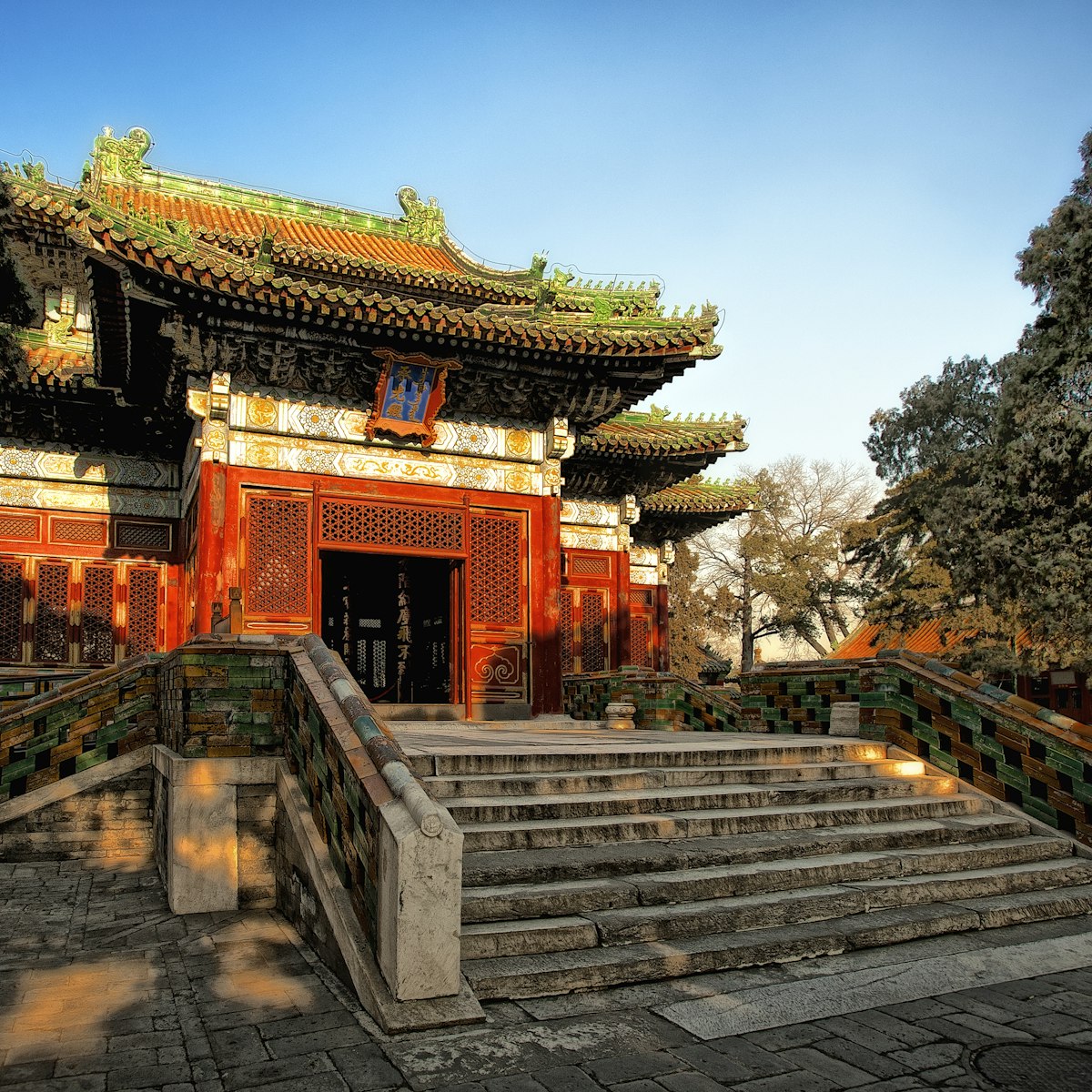Of all the Ming tombs, this is the only one to have been excavated, and visitors can descend into the enormous burial chambers of the Wanli Emperor (1563–1620) and his empress and concubines, almost 30m below ground. The 1957 excavation was an infamously botched affair, but those grave goods that did survive both the archaeologists' mishandling and a later trashing by Mao's Red Guards during the Cultural Revolution are presented in the attached museum.
Dìng Líng, the third largest of the Ming tombs, was chosen as a trial site before the planned excavation of Cháng Líng, the largest. Thousands of pieces of silk, wood, porcelain and other artefacts were unearthed, but there was neither the technology nor the know-how to adequately preserve them. Priceless silks were piled into a leaky storeroom, documentation of the rushed dig was incomplete, and then the Cultural Revolution put a stop to all archaeological work. In 1969, Red Guards dragged the bodies of the Wanli Emperor and empresses to the front of the tomb, where they were 'denounced' before a crowd and set alight, along with many other artefacts.
All this led to a more hands-off archaeological policy in China, which explains why, to this day, no other tombs have yet been excavated, including that of Qin Shi Huang in Xi'an, China's first emperor.
The 872 bus from Beijing stops here after the Spirit Way and before its terminus at Cháng Líng.







